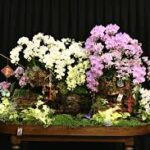Money Cat and the Artistry of Natural Materials in Sculpture
Exploring the Harmony of Money Cat with Natural Materials in Sculpture:

In the realm of sculpture, Money Cat becomes a unique muse, inspiring artists to craft intricate and meaningful pieces using natural materials. This article delves into the fascinating intersection of Money Cat with the artistry of sculpture, where the iconic feline figure and the beauty of natural materials come together in a harmonious dance of cultural symbolism and craftsmanship.
1. Jade Carvings and Cultural Symbolism:
Jade, revered for its cultural significance, becomes a canvas for sculptors to carve exquisite representations of Money Cat. The smooth, lustrous surface of jade enhances the symbolic richness of Money Cat, creating sculptures that embody both cultural heritage and artistic finesse.
2. Wooden Sculptures and Traditional Craftsmanship:
Artisans channel traditional craftsmanship into wooden sculptures of Money Cat. The warmth and texture of wood provide a tactile and visually appealing medium for expressing the feline figure’s symbolism, creating pieces that celebrate both cultural tradition and the natural beauty of the material.
3. Stone Carvings and Symbolic Presence:
Stone sculptures of Money Cat exhibit the resilience and timeless quality of natural materials. Whether carved from marble, granite, or other stones, these sculptures embody the enduring symbolism of prosperity, inviting viewers to appreciate the fusion of cultural meaning and sculptural artistry.
4. Bamboo Creations and Artistic Elegance:
Bamboo, known for its flexibility and grace, becomes an artistic medium for sculpting Money Cat. Artists weave intricate designs and patterns, infusing the feline figure with a sense of artistic elegance that complements the cultural richness of the symbolism.
5. Ceramic Interpretations and Cultural Fusion:
Ceramic artists incorporate Money Cat into their creations, melding the malleability of clay with the cultural fusion of the iconic figure. From handcrafted pottery to glazed ceramic sculptures, Money Cat becomes a dynamic expression of cultural symbolism in the world of ceramic art.
6. Organic Materials and Environmental Consciousness:
Some artists push the boundaries by using organic materials like branches, twigs, and natural fibers to sculpt Money Cat. This eco-conscious approach not only adds an avant-garde element to the artwork but also underscores the importance of sustainability and environmental consciousness in artistic expression.
7. Mixed Media Sculptures and Contemporary Interpretations:
Contemporary sculptors experiment with mixed media, combining natural materials with modern elements. Money Cat, in these innovative sculptures, takes on new dimensions, blending tradition with contemporary interpretations in a visually compelling manner.
8. Public Installations and Outdoor Art:
Sculptors create public installations of Money Cat using natural materials, contributing to outdoor art landscapes. These large-scale sculptures engage with the environment, inviting viewers to interact with the symbolic presence of Money Cat in open spaces.
Conclusion:
Money Cat’s journey into the realm of sculpture reveals the dynamic interplay between cultural symbolism and the artistry of natural materials. From jade carvings that embody tradition to contemporary mixed-media sculptures pushing artistic boundaries, Money Cat continues to inspire sculptors to create pieces that resonate with both cultural heritage and the intrinsic beauty of the materials used.

